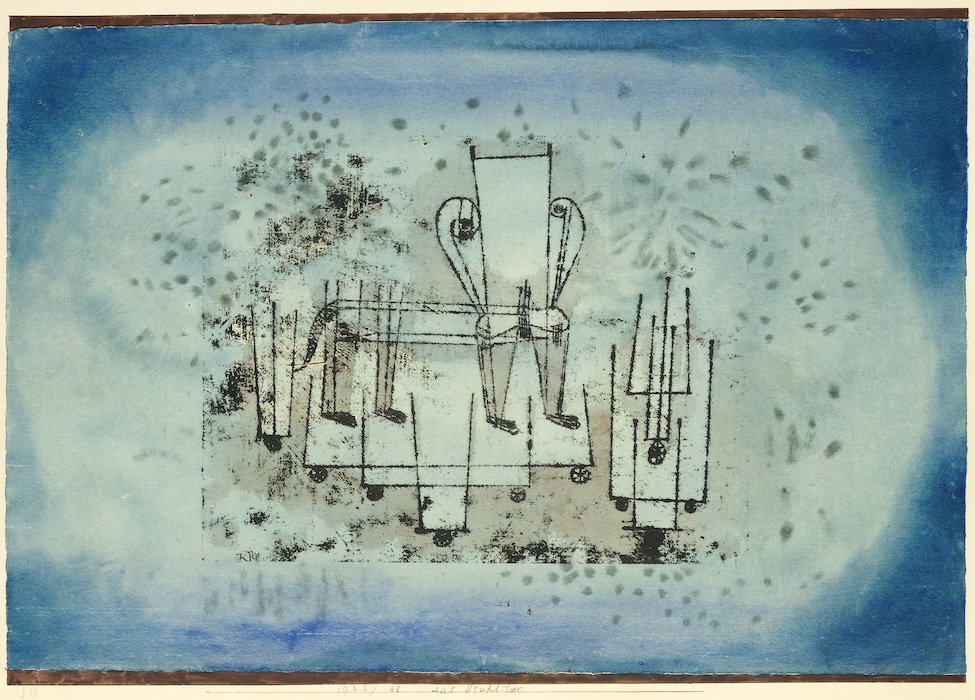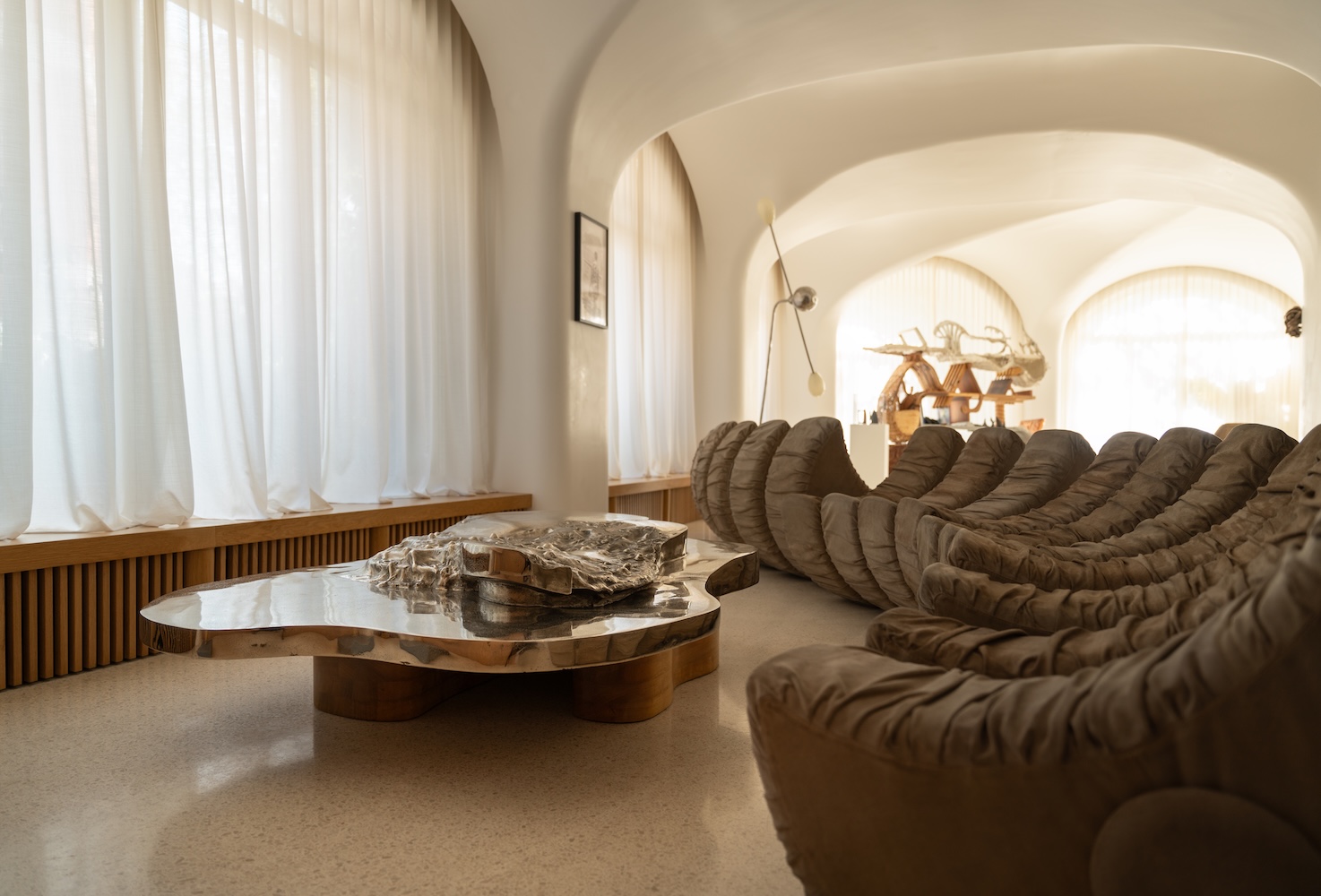Since its popularization in the 1830’s, photography has been used as a tool to freeze passing moments. However, while the Pictorialists were recreating literary scenes, the Surrealists were photographing their muses and families were taking vacation snapshots, many photographers chose to focus on the unphotographable. In his introduction, Jeffrey Fraenkel defines the unphotographable abstract as “thought, time, ghosts, god, dreams.” Paradoxically, this photography exhibition focuses on what cannot be represented.
A survey, “The Unphotographable at the Fraenkel Gallery” in San Francisco (January 3 – March 23, 2013) boasts approximately fifty works from acclaimed artists such as Diane Arbus, Man Ray, Wolfgang Tillmans, Adrien Majewski and Liz Deschenes. The accompanying 124 page clothbound book produced by the Fraenkel Gallery includes 57 duotone and four-color illustrations.
Minimalistic and separated into four sections, the book does not necessarily follow a stringent organization; there is a large range of time periods, subjects and photographic processes represented. This only adds to the impression that the unphotographable is undefinable. A few photographs with related subject matter are grouped together, and some directly relate to the following works. For example, the curatorial decision to place Wolfgang Tillmans’ interpretation of the physical thought process in Mental Picture #97 (2001) before Carl Wernicke’s 1897 image of a close-up of the frontal sections of the brain is a purposeful juxtaposition.
As the Metropolitan Museum of Art’s “Faking It: Manipulated Photography Before Photoshop” exhibition revealed this past Fall, photographic manipulation is not a new phenomenon. Almost since its inception, it has been possible that a photograph could be altered. With a myriad of methods, including the accidental, artists and amateurs have created nonrepresentational and metaphysical images. Ghosts—such as those which appear in T. Glendenning Hamilton’s The T’Zan Teleplasm (1933) and W. A. Sinklier’s The Angel at Greensburg (1916)—were common photographic oddities that caused widespread discussion of the supernatural. The sight captured by Dr. Robert Kenneth Wilson of the Loch Ness Monster (1934) was the catalyst for many urban myths surrounding the monster.
Another popular supernatural phenomenon included in the book and exhibition are images of heavenly beings, as in William C. Weidling’s Nature’s Mystic Apparition of Christ (1914). Quoted in a letter, Alfred Stieglitz wrote, “Several people feel I have photographed God.” Appropriately, his photograph Equivalent (1931) that accompanies this quote looks as though God might have appeared to Moses in the burning bush on the Mount.
Light and movement were typical methods utilized to create the abstract. The “whirling field of energy” surrounding the couple in an anonymously taken photograph in the first section appears eerily over their smiles as though something sinister has taken ahold of them. The pattern created in Adrien Majewski’s Mr. Majewski’s Right Hand. Posed for 20 Minutes. Room Temperature. (1895-1900) was produced by a rapid movement of his hand; the resulting image without the title would be unrecognizable. In Ralph Eugene Meatyard’s Untitled (c. 1957), a combination of moving swaths of light create a photograph that could be seen to capture the flight of souls from the earth. All of these photographs included in “The Unphotographable” book are quotidian images that have been manipulated into other indistinguishable forms.
Many of the photographs included in the book focus on the natural world. Some, like Robert Adams’ reproduction of the night sky in Pine Valley, Oregon (2003), are scientifically explainable natural wonders. However, photographs such as Pierre Jules César Janssen’s Spots on the Surface of the Sun (1885) require a title to understand what was photographed. A photograph that could be part of his Seascapes series, Hiroshi Sugimoto’s Bay of Sagami, Atomi (1997) focuses on a blinding white light that bifurcates over the horizon. The bay behind the light could be anywhere in the world. Whilst these images are of our universe, they can still become abstract undefinable forms through the photographer’s lens.
Continuing in this vein, many of the experimental photographs also retain an abstract and undefinable quality. Jay Defeo’s streak of light in Untitled (1973–74) is reminiscent of both an Alexander Calder and a flash of lightening. Richard Learoyd’s experimental photograph of an Empty mirror (2012) could easily be an eclipsed moon. The scientific photograph by Jakob Ottonowitsch von Narkiewitsch-Jodko, A Spark Captured on the Surface of the Body of a Well-Washed Prostitute (1895), could be a sea anemone.
As with most of her work, Sophie Calle’s Autobiographies (The Obituary) (2012) displays how the merging of text with an image can result in a conceptual relationship. This Technicolor-like photograph of a dying woman’s pedicure (“so my feet look nice when I go”) accompanies a list of “lasts” on the facing page. While the running list creates a slowed countdown that can be read again and again, Calle journalistically writes that “The last breath, somewhere between 3:02 and 3:13” was impossible to capture. While an image of a pedicure can last forever, death is too abstract to see. With a similarly transient subject, Adam Fuss’ Untitled (1990) depicts a serious young boy with dark liquid eyes. The tenderness he projects reminds the viewer of the ephemerality of childhood.
Famous for her work with outsiders and people living on the fringes of society, Diane Arbus’ Blowing newspaper at a crossroads, N.Y.C. (1956) is not typical of her popular documentary work. Despite this, the dark and underexposed photograph of the single newspaper emits a loneliness and quality of strangeness found in her other work. As this photograph is atypical, Man Ray’s Solarized image of a nude female body in Primacy of Matter over Thought (1929) is very characteristic of his work. The manipulation of the exposure of light to this print resulted in an excessive amount skin to appear to be flowing out from her body. While this would otherwise be impossible in real life, Man Ray’s Solarization technique made this bizarre look photographable.
Toward the end of the book is a series of six plates by Mel Bochner, Photography before the Age of Mechanical Reproduction (2011). Using multiple photographic methods, the photographs all state: “Photography cannot record abstract ideas. Encyclopedia Brittanica.” The Unphotographable may be undefinable, but it is possible. It becomes clear when viewing “The Unphotographable” exhibition book, that the abstract can be captured with photography. In fact, the supernatural, the wondrous, the vague and transient, and the strange can all be photographed.










